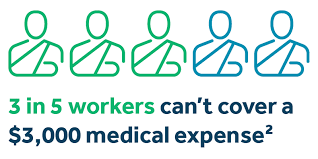Yes, you read that right! There are penalties for not signing up for Medicare. If you incur penalties from enrolling in Medicare at the wrong time, they can stick around for a lifetime. Understanding when to enroll in Medicare and how to navigate the process, will help you keep your hard-earned money where it belongs.
Have you ever been late on paying a bill and been able to easily fix your tiny mistake? Me either. Unfortunately, life happens and we forget things. That’s understandable! Though, choosing to put things like Medicare on the back burner can come with a hefty price tag.
Your Initial Enrollment Period (IEP) begins three months prior to the month of which you turn 65 and ends three months later.
Late Enrollment Penalty with Part B
You are required to apply for Medicare Parts A and Part B on your own, if you are not already receiving social security benefits. You will enroll in both during your Initial Enrollment Period (IEP). The IEP begins three months prior to the month in which you turn 65 and ends three months later.
Part A is free to those that have worked in the United States for at least 10 years while Part B, however, will cost you each month. If you make $85,000 or less per year, the standard monthly premium as of 2018 is $134.00. The LEP (late enrollment penalty) will occur if you do not apply for Part B within your initial enrollment period. The LEP is not a one-time charge that you can pay and get rid of, it’s lifelong!
Part B monthly premiums go up by ten percent each year that you do not have creditable coverage.
For example: Sally decides to not get Part B for five years after her IEP ends.
5 years x 10%/year = 50%
$134 (monthly Part B premium) + 50% = $201/month
Instead of Sally only having to pay $134 per month for her Part B premium, she is stuck paying an additional $67 every month. Applying for Part B sooner rather than later means you will have coverage and you will avoid the penalties for not signing up for Medicare. A win-win situation if you ask me!
Late Enrollment Penalty with Part D
Part D is your Prescription Drug Coverage. Even though you are not required to obtain this, we recommend you do. That way you have protection for both current and future medications. Your IEP for Part D is usually identical to your IEP is for Part A and B. If you have a Medicare Advantage Plan, your Part D is probably included, so you won’t have to enroll in another one. If you have anything other than an advantage plan, Medicare expects you to enroll in Part D on your own. Now, if you fail to enroll in Part D, you will get a LEP just like with Part B.
The penalty is again added to your Part D monthly premium and is lifelong. It is calculated by multiplying 1% of the national base premium, which is $35.02, by the number of uncovered months without creditable coverage.
For example: Fred doesn’t enroll in Part D because he isn’t currently prescribed any medications. He goes 24 months without Part D coverage.
48 months x 1% of $35.02 (.35 ₵) = $16.80
$16.80 + your Part D monthly premium = your Part D monthly premium for life
Creditable Coverage
The only way you can not enroll in Medicare after your IEP ends and still avoid the penalties is by having creditable coverage. Creditable coverage is when you have insurance through a different source other than Medicare. Forms of creditable coverage include being apart of your current employer’s insurance or being apart of your spouse’s employer’s insurance. It’s not always necessary for someone who does have creditable coverage to enroll in Medicare, but if you do choose to enroll during your IEP it will be for the better.
Creditable coverage will ensure you do not pay penalties for not signing up for Medicare.
Let’s say you don’t enroll in Medicare during your IEP because you have creditable coverage. You will then have to prove to Medicare that you did in fact have insurance during that time to avoid penalties for not signing up. As you might imagine, proving something to the government can take a lot of paperwork and time. Then there are those times when it doesn’t work at all. If Medicare has any reason to believe that you didn’t have creditable coverage, they can deny your forms. If that happens, you can always try calling Medicare but that doesn’t guarantee a resolution. While you are trying to straighten things out, those penalties are being tacked on to your premium.
Appealing these penalties is the next step. Appealing the penalty can be done through Maximus. Maximus is a business that provides help to Medicare and other government health agencies. They require you to mail forms in for your requests. From there, they will try and obtain proof of your creditable coverage by calling your previous employer for instance. Finally, a reimbursement for those penalties you were paying will be issued to you. The process with Maximus alone can take 90 days!
Boomer Benefits Services
Policyholders receive support from the Client Service Team for life!
That’s where Boomer Benefits comes in. As our client, we’d help you through all of this! Our team will act as your Medicare gurus, helping you avoid wasting time on the phone with automated systems. The Client Service Team speeds up the process by dedicating our time to you and following up with Medicare accordingly. This is good news for you, because with our guidance we can make sure you never see the penalties for not signing up for Medicare at the right time.

